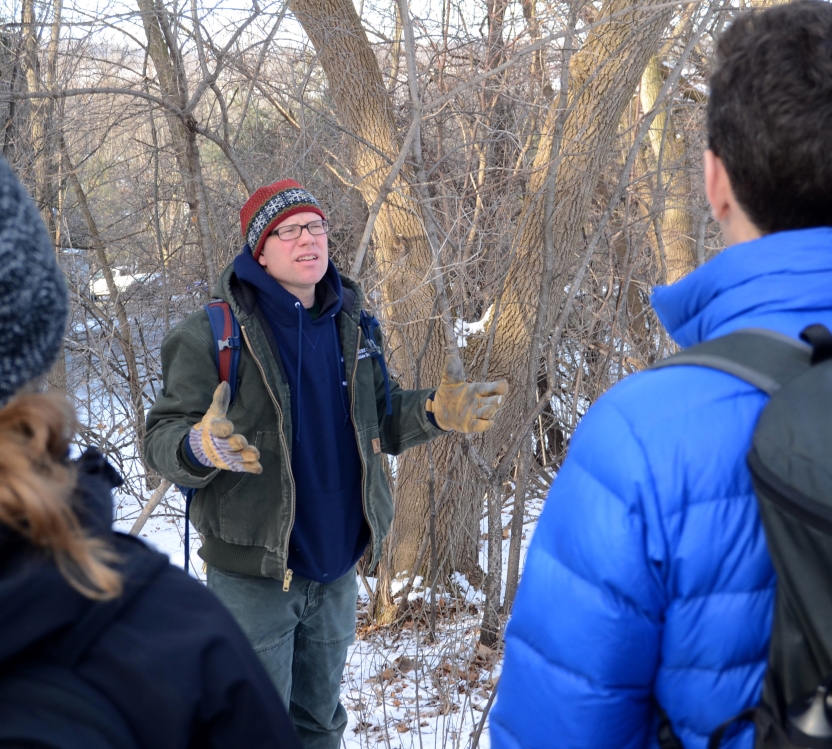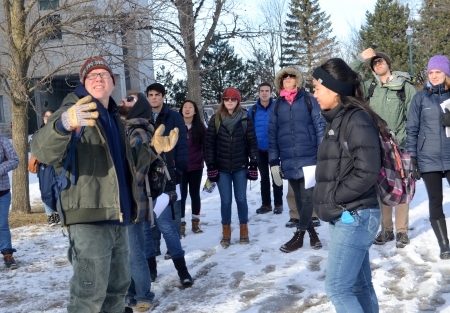J-term Scenes: The Vanishing Ash


MIDDLEBURY, Vt. — The emerald ash borer is a small insect creating a large problem for native ash trees in the U.S., Vermont and the Middlebury College campus. The Middlebury campus contains nearly 200 large ash trees, all considered threatened by the borer, which is known to be nearing Vermont. The urgency of the situation prompted College Landscape Horticulturalist Tim Parsons to offer a Winter Term course for students interested in learning how to manage the invasive threat.
Two years ago, Parsons taught a similar class called Trees and the Urban Forest, which used the state’s emergency plan for the arrival of the insect as a model to create a plan for the town of Middlebury. This year’s course goes even more local, developing a similar plan for the College campus.
Aside from the aesthetic loss of the beautiful trees and the physical dangers of dead limbs falling in pedestrian areas, there are quantifiable losses that would result from the destruction of these trees. Students in the course have split their time between trekking the campus to survey the ash population and running computer models to calculate the lost benefits from the trees, including storm water and pollution abatement, carbon sequestration, and energy savings.
Students will present their findings and recommendations during the final week of Winter Term.

